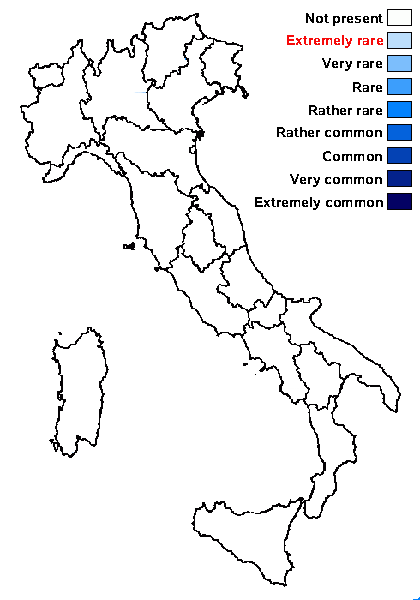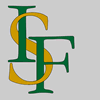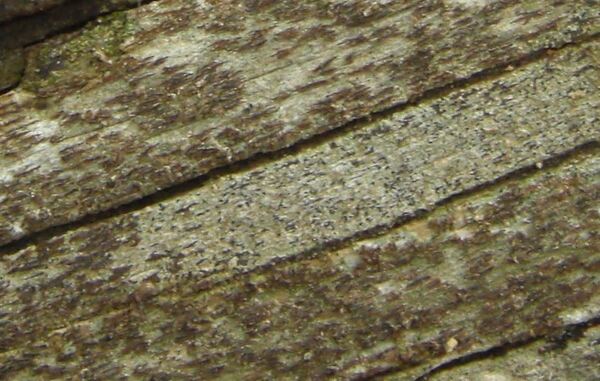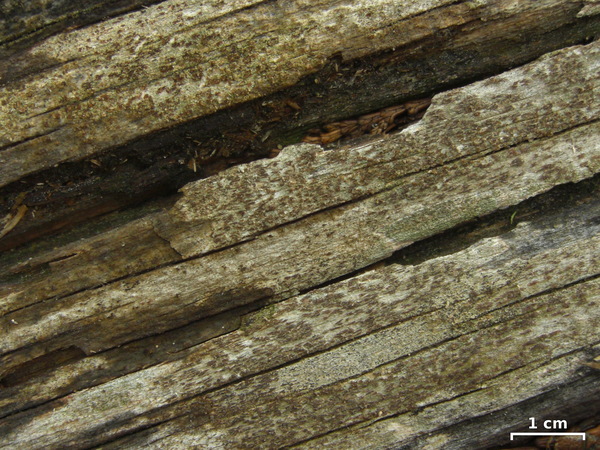Xylographa rubescens Räsänen
in Vainio, Medd. Soc. Fauna Flora Fenn., 47: 51, 1921
Synonyms:
Distribution:
Description: Thallus crustose, rimose to verruculose-areolate, forming distinct granular patches of unpigmented or brown, 50-70 μm wide, corticate goniocysts strongly infused with crystals visible under polarized light. Apothecia clustered, at first linear and very variable in length (0.4-4.4 x 0.11-0.45 mm), later growing linearly in two to many directions, forming contorted, flexuose aggregates, the disc often fragmenting into multiple sectors, flat to strongly convex, pale to red brown or dark brown, matt, often apparently pruinose, the margin thick, paler, persistent. Exciple of laterally interwoven hyphae, appearing paraplectenchymatous in vertical section, 18-60(-90) μm wide, brown in outer part, colourless within, filled throughout with crystals visible under polarized light; epithecium dark brown; hymenium colourless to yellowish brown, 60-120 μm high, lacking crystals, hemiamyloid, I+ blue-green turning rust red, rarely euamyloid; paraphyses slender, branched and anastomosing 1.5-2.5 μm thick at mid-level, the apical cells 3-5 μm wide, arising straight through the ascus matrix until reaching the surface, then continuing laterally in knot-like tangles over the surface of disc; hypothecium colourless, 80-170 μm high. Asci 8-spored, clavate-cylindrical, unitunicate, the gelatinous sheaths covering the walls amyloid, the tholus lacking internal amyloid structures, similar to that in Trapelia. Ascospores 1-celled, hyaline, ellipsoid, (9-)11-12.5(-14) x (4.5-)5.5-7(-8.5)μm. Pycnidia rare, globular to cupular, 60-170 μm across, the wall of interwoven hyphae, appearing paraplectenchymatous, the cell walls with internal brown pigments. Conidia filiform, curved, 12-14 x c. 0.5 μm. Photobiont chlorococcoid. Spot tests: thallus K+ yellow then red (needle-like red crystals), C-, KC-, P+ yellow. Chemistry: norstictic acid (major), sometimes with variable amounts of stictic acid.Note: a mainly boreal species growing on conifer wood, also known from the Pyrenees, often confused with X. parallela in the past; to be looked for in Italy, especially in the Alps.
Growth form: Crustose
Substrata: lignum
Photobiont: green algae other than Trentepohlia
Reproductive strategy: mainly sexual

Predictive model
Growth form: Crustose
Substrata: lignum
Photobiont: green algae other than Trentepohlia
Reproductive strategy: mainly sexual

Predictive model
 Index Fungorum
Index Fungorum
 GBIF
GBIF



